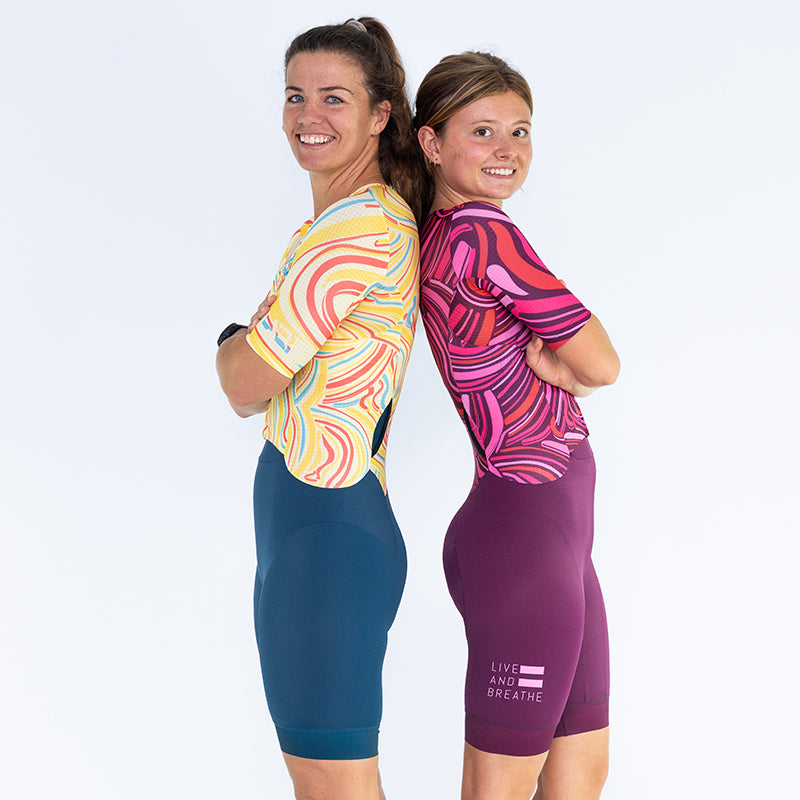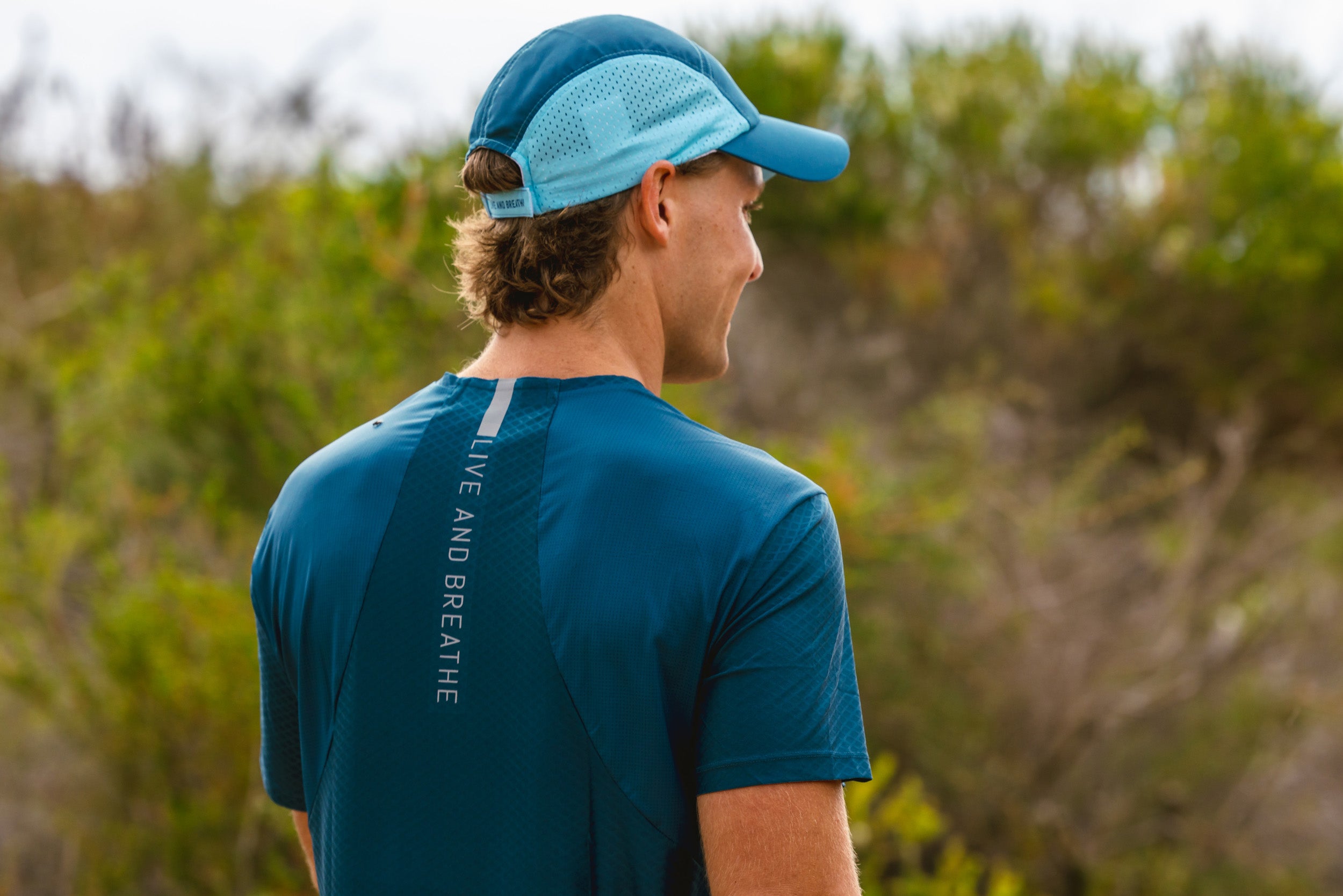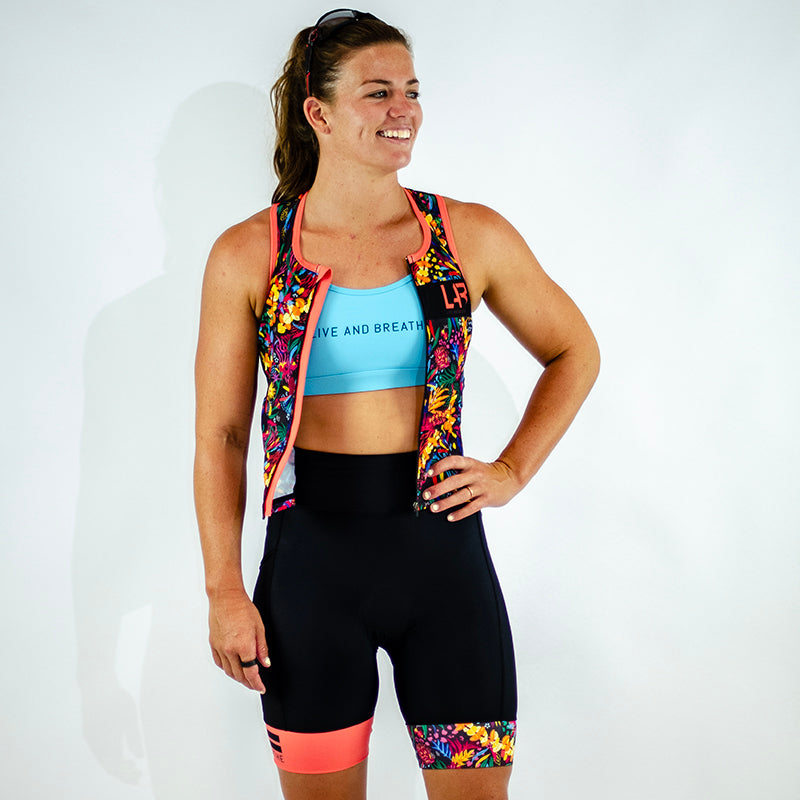Deciding on the right fabric for your team swimwear is an important decision. There are two main fabrics we offer, Chlorine Proof Polyester and Extra Life Lycra. Both these fabrics have pros and cons and ultimately it comes down to your clubs needs for comfort and durability.
History of swimwear fabrics, we've come a long way:
We have come a long way from the 18th and 19th century wool and cotton swimsuits that would get heavy when wet. Throughout history a range of fabrics have been used for swimwear including silk but it wasn’t until the mid twentieth century and the introduction of synthetic fabrics that we started to see fabrics used in swimwear that perform well in the water. Particularly the introduction of Lycra revolutionised swimwear with it’s superior stretch and recovery providing a firm fitting swimsuit without sacrificing comfort.
The introduction of polyester for swimwear was another big leap in fabric technology, as the polyester provided a much higher durability in the harsh chlorine pools. The durability combined with it’s stretch and recovery provided a popular option from the 1980s.
In the last two decades we have seen further advancements in fabric for swimwear, with PBT for increased resistance to chlorine, including UV protection in fabrics and more recently the use of recycled plastics in the manufacturing of swimsuit fabrics providing a greener option.
Key Performance Materials for Swimwear
Selecting the ideal swimwear fabric involves a careful consideration of essential features that contribute to both performance and longevity.
If you swim in a chlorinated pool, chlorine resistance is paramount in this decision-making process. Our Chlorine Proof fabric withstands the corrosive effects of chlorinated water, ensuring that swimwear maintains its color vibrancy and elasticity even after prolonged use.
Another key performance requirement of a great fabric for swimwear is Quick-dry technology. Both our Chlorine Proof fabrics and Extra Life Lycra are quick dry and enhances the swimmer's experience by swiftly absorbing and evaporating moisture. This not only adds to overall comfort but also prevents issues like discomfort and chafing.
UV-protective fabrics play a crucial role, especially for outdoor activities. Composed of UPF-rated nylon and polyester blends, these fabrics act as a shield against harmful UV rays, minimizing the risks associated with prolonged sun exposure. Both our fabric options provide UV protection, it is vital for Australian's and anyone who is spending time outdoors.
Lastly, the importance of stretch and recovery in fabrics cannot be overstated. Materials used for swimsuits must offer the necessary flexibility for a wide range of movements in the water while ensuring a comfortable fit. The combination of these features allows individuals to make informed choices based on their specific needs, be it regular pool use, competitive swimming, or engaging in outdoor water activities. Our extra life lycra provides a higher level of stretch providing a more comfort focused fit, but both our Lycra and Chlorine Proof fabric offerings provide a comfortable fit.
Considerations for different swim activities
We recommend that any club who expects their members to be wearing their swimwear in a Chlorine Pool opt for the Chlorine Proof option. Chlorine Proof fabrics will last for years as long as care instructions are followed. However, as they are a durable fabric, it is a thicker fabric and has a rougher finish than the lycra option.
We recommend any clubs that are using their swimwear in salt water opt for the smooth finish of the Extra Life Lycra. This fabric has been designed to ensure minimal chaffing when combined with the harsh salt crystals when ocean swimming. While it provides a great comfortable fit, and reduces chaffing risk, the longevity of Lycra is not as long lasting as Chlorine Proof fabrics in the Chlorine pool.
Other considerations when choosing fabrics is the environment in which your swimwear will be used. Rough surfaces can cause havoc on the fibres of performance fabric, particularly chlorine proof fabrics. So consider the pool edge on your swimming pool and if it is a rough surface like pebble crete, rough concrete or sandstone consider the Extra Life Lycra.
Sustainability in Swimwear Fabrics
The increasing demand for sustainable swimwear reflects a global shift towards eco-conscious consumer choices. Responding to this demand, the swimwear industry has embraced eco-friendly materials and manufacturing practices to minimize environmental impact.
Sustainable swimwear options often utilize recycled materials, such as recycled polyester made from post-consumer plastic bottles, reducing the need for new resource extraction. Other environmentally friendly choices include organic cotton and regenerated nylon sourced from discarded fishing nets.
Manufacturing practices also play a crucial role; water-conserving dyeing processes, ethical labor practices, and reduced carbon emissions contribute to the overall sustainability of swimwear production. By opting for sustainable swimwear, consumers not only contribute to environmental conservation but also support a shift towards responsible and ethical fashion practices. As awareness grows, the availability of eco-friendly swimwear options continues to expand, providing individuals with stylish choices that align with their values for a more sustainable future.
Environmental sustainability is important to us, so all our fabrics on offer are recycled options made with recycled plastic bottles removing waste from our oceans and rivers. We also focus on well made, durable garment construction to ensure that our garments do not end up in landfill prematurely.
Conclusion
While all this information could seem a little overwhelming, the good news is that we have done a lot of the heavy lifting for you - we are the experts after all. We use two fabrics for swimwear, Chlorine Proof and Extra Life Lycra. Both these options offer UV Protection, the right amount of stretch and recovery, provide the maximum durability for the fibres used, and are recycled. The main decision you need to make is whether you need a super durable Chlorine Proof option or need a fabric that better suits salt water swimming and comfort.







Leave a comment
This site is protected by hCaptcha and the hCaptcha Privacy Policy and Terms of Service apply.